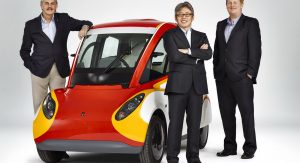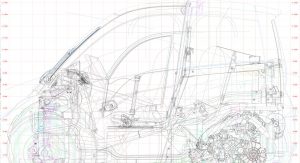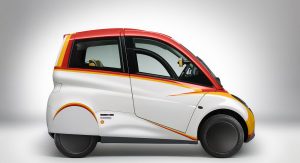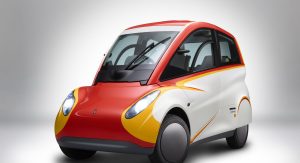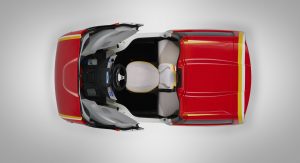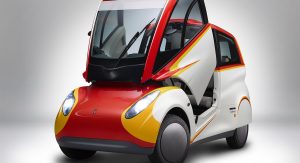After three years of intense joint development with Shell, Gordon Murray has finally revealed his innovative concept city car.
The concept is based on Murray’s previous design, the T.25 city car shown back in 2010. This is basically the result of a co-engineering collaboration among Gordon Murray Design, Shell and Geo Technology engine specialists, with the public debut scheduled for the Beijing Motor Show.
All three partners worked together, offering their expertise in the areas of vehicle, engine and lubricants design with the sole purpose to reduce the amount of energy required, both for the construction of the vehicle and the use of it on the roads.
The Shell Concept Car can deliver a 34% reduction in primary energy use over its entire lifecycle when compared to a typical city car, while requiring around half the energy necessary for its build and run against a small family car, with the percentage reaching 69% if compared with an SUV model.
In plain English, Murray’s new concept can return a steady 107 mpg UK (2.64lt/100km – 89.1 mpg US) when doing 45mph (70km/h). In a formal NEDC test, the Shell concept emitted 28% less CO2 from a typical city car and 32% from a typical hybrid, without giving us an exact number.
The project’s engineers were able to drop the weight by 80kg for a total of 550kg, redesigning the tubular frame and using recycled carbon fiber in the body. Many of the car’s components are also 3D-printed to accelerate the construction of the vehicle.
The cabin features a central driving position, with the two passengers’ seats in the second row (McLaren F1-style, sort of).
“This project shows that if we use the best of today’s technology, including cutting edge lubricants science, we could potentially have a major impact on energy use and reduce CO2 emissions,” said Mark Gainsborough, Executive Vice-President of Shell’s global lubricants businesses. “The improvement in economy derived from the collaborative design of engine and lubricant is impressive and highlights the enormous benefits achieved from close relationships between design partners.”
“Our car may be small, but it’s packed with potential,” said Andrew Hepher, Vice President, of Shell’s lubricant research team. “We want to accelerate the conversation about how we make road vehicles more energy efficient and less carbon-intensive. In the coming weeks and months, we look forward to sharing our research insights from this project with engine designers, car manufacturers, academics and other experts across the automotive sector.”



![Gordon Murray And Shell Finally Reveal Their Concept Car [w/Videos]](https://www.carscoops.com/wp-content/uploads/2024/04/Hyundai-Ioniq-5-N-1024x576.jpg)
![Gordon Murray And Shell Finally Reveal Their Concept Car [w/Videos]](https://www.carscoops.com/wp-content/uploads/2024/04/2025-Toyota-4Runner-80-Stephen-Rivers-for-Carscoops-copy-1024x576.jpg)
![Gordon Murray And Shell Finally Reveal Their Concept Car [w/Videos]](https://www.carscoops.com/wp-content/uploads/2024/04/2025_Toyota_4Runner_TRDPro_Mudbath_049-copy-1024x576.jpg)
![Gordon Murray And Shell Finally Reveal Their Concept Car [w/Videos]](https://www.carscoops.com/wp-content/uploads/2024/04/ythgvf-1024x576.jpg)
![Gordon Murray And Shell Finally Reveal Their Concept Car [w/Videos]](https://www.carscoops.com/wp-content/uploads/2023/06/ForCarscoops-1024x683.jpg)
![Gordon Murray And Shell Finally Reveal Their Concept Car [w/Videos]](https://www.carscoops.com/wp-content/uploads/2016/04/open-11.jpg)
